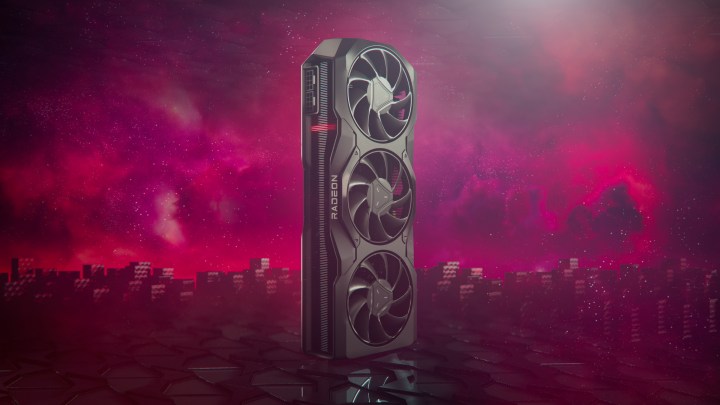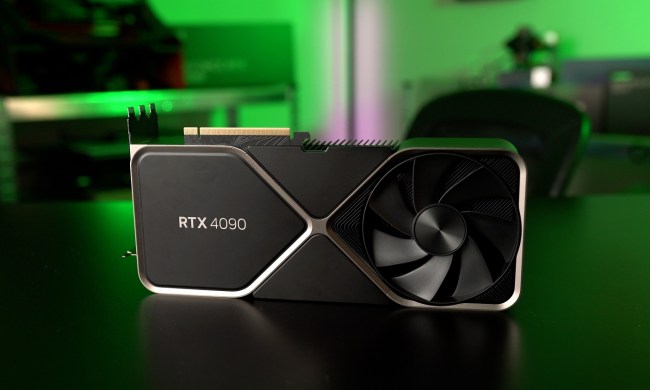The GPU market is split between AMD and Nvidia, but it’s far from being divided in half. Nvidia has long been the ruler, reaping the rewards of better brand recognition as AMD trails miles behind.
AMD may not be winning the revenue game, but it still makes some of the best graphics cards, so it doesn’t deserve to be overlooked. Here’s why you should consider choosing AMD instead of Nvidia for your next GPU upgrade.
Price

It’s impossible not to bring up pricing when discussing the whole “AMD vs. Nvidia” situation. In fact, this is one of the major reasons why AMD might be the better pick, but to reach that conclusion, we have to dig deeper than just “Nvidia is expensive and AMD is cheap,” because that’s simply not true.
The truth is that both sides of the conflict are generally expensive these days. Truly affordable GPUs stopped being a thing even before the GPU shortage. Still, the shortage that made the prices of graphics cards soar to previously unseen heights (sometimes over 300% above the recommended list price) seems to have opened the floodgates and unleashed a worrying trend in GPU pricing.
While I wouldn’t call AMD’s latest generation of graphics cards “cheap,” it’s undeniably cheaper than Nvidia, which adopted a pretty ridiculous pricing strategy in this generation. Let’s take a look at AMD’s RX 7900 XTX, RX 7900 XT, and their Nvidia counterparts, the RTX 4080 and the RTX 4070 Ti.
- RX 7900 XTX: $980 on
- RX 7900 XT: $800 on
- RTX 4080: $1,200 on
- RTX 4070 Ti: $800 on
Price is one thing, but it’s meaningless if you don’t count performance, so let’s talk about that for a second.
AMD holds up well

In our own testing in 1440p gaming, we found that the RTX 4080 performs the best of all four cards, but the frames per second (fps) margin between the Nvidia card and the RX 7900 XTX is small (159 frames per second, or fps, versus 155 fps). Many of us would rather save $200 than have an extra 4 fps, but of course, that’s an oversimplification of the performance gap between AMD and Nvidia.
Nvidia has something that AMD doesn’t — superior ray tracing and DLSS. DLSS 3, to be more specific, generates entire frames instead of pixels, and it’s only available on RTX 40-series cards. AMD’s FidelityFX Super Resolution (FSR) can’t quite compare just yet, and FSR 2.0 is also available on Nvidia cards, making this technology a nonissue for Nvidia owners.
The RTX 4070 Ti is also slower than the RX 7900 XT, but it becomes less of a clear choice when you take DLSS 3 and improved ray tracing into account. On the other hand, AMD’s RDNA 3 GPUs still handle ray tracing better than the previous generation, so it’s not like it’s going to be unplayable — far from it.
Long-story short is that in this generation, AMD has cheaper GPUs if you’re not bothered by the ray tracing issue and the lack of DLSS. This becomes even more true if you skip the RX 7900 XTX and RX 7900 XT and move down to last-gen models.
AMD’s last-gen cards are a solid choice

Everyone is excited by the prospect of powerful current-gen cards, but you don’t need an RTX 4090 to play AAA games in 2023, and you won’t need that level of performance for years. In fact, for both manufacturers, shopping last-gen is a really viable option, and this is where AMD truly shines right now.
Nvidia’s RTX 30-series is starting to make less and less sense, what with the RTX 4060 Ti and RTX 4060 coming out to fill some gaps in its 40-series lineup. However, AMD’s RX 6000 cards are still readily available everywhere, and they can easily outperform some of Nvidia’s GPUs at a lower cost.
The RX 6950 XT is a good example of this. It’s a 4K gaming GPU, and yet, you can find it on Amazon for . To get solid 4K gaming performance out of an Nvidia card, you would need to buy at least the RTX 4070 Ti or the RTX 4080, which are $800 and $1,200, respectively. In the last generation, you’d need an RTX 3080 and above, which run from $830 to well over $1,000 right now.
The RX 6800 XT is another solid choice. Fit for some 4K and a lot of 1440p gaming, it costs around right now. And if you’re building a budget PC, you can always grab the RX 6600 XT for as it has insane performance per dollar compared to many other GPUs.
VRAM

The amount of VRAM in some of the latest graphics cards has been a hot topic as of late, and this is one area where AMD is winning big-time.
Nvidia’s GPUs are lacking in VRAM, and although recent years show an upward curve, it just doesn’t seem to be rising fast enough to meet the growing demands of the gaming industry. This is slowly becoming a problem.
Recent trends show that modern AAA titles are increasingly likely to require more VRAM than Nvidia packs into its GPUs. Don’t get me wrong, the low amount of VRAM isn’t new for Nvidia — it’s just never been an issue on such a large scale up until recently, and it’s only going to get worse.
If you want lots of VRAM, you need to buy some of the more expensive Nvidia cards. The RTX 4090 comes with 24GB of VRAM, but it costs $1,600. The RTX 4080 sports 16GB and has a $1,200 price tag.
Nvidia is, admittedly, soon releasing a cheaper option with plenty of video memory — the RTX 4060 Ti model that comes with 16GB. Still, that’s an unreleased model that won’t be coming until July, and it’s the unicorn of the Ada Lovelace lineup. For comparison, the $800 RTX 4070 Ti only has 12GB, and the standard RTX 4060 Ti sports 8GB.
AMD has been stacking up on VRAM for a long time now. The RX 6950 XT comes with 16GB of memory, but then, so does the RX 6900 XT, RX 6800 XT, and the RX 6700 XT — and at least some of those will be better than Nvidia’s $500 RTX 4060 Ti. If you want even more VRAM, AMD’s RX 7900 XTX sports 24GB, which is the same as the RTX 4090, but it costs $600 less.
No matter how you spin it, if the amount of VRAM is important to you, AMD is the manufacturer that pays it more mind than Nvidia. The more advanced games become, the more you’ll want to have a decent amount of video memory.
Don’t be afraid of AMD

AMD and Nvidia are often compared to one another, but right now, each GPU maker fills a different niche in the market.
Nvidia is the giant, dominating in performance, lineup size, and brand recognition. AMD, ever the underdog, is trying to claw its way up, but it’s also setting its sights on a different end goal than Nvidia. It’s not about being the best, it’s about being able to appeal to a greater number of potential users.
Unfortunately, it sometimes feels like AMD is letting Nvidia win. Part of it is an outdated public perception of AMD; you’ll still find claims about broken drivers all over the internet, but those problems are much fewer and far apart than they were previously. AMD has improved by leaps and bounds, and for mainstream consumers, it’s actually the better pick right now. Of course, there are also reasons to choose Nvidia, so it’s a difficult decision.
Part of AMD’s diminished presence in this generation is its own fault. After all, as Nvidia continues pumping out new GPUs (hello, three models of the RTX 4060), AMD remains silent. With just two cards and a third in the pipeline, it doesn’t have the same momentum as Nvidia does right now.
Still, lack of momentum or not, AMD is solid. It’s cheaper than Nvidia, it’s efficient, and AMD GPUs are readily available everywhere — sometimes even below MSRP. Nvidia is better on paper, but AMD fits nicely in a more budget-oriented build, and the recent VRAM buzz is giving it an unexpected edge over Team Green.
If you’re more interested in performance than sticking to the latest generation, AMD’s last-gen offerings are still great picks. The upper RX 6000-series (such as the RX 6950 XT and the RX 6800 XT) can handle 4K gaming, but these cards are cheap enough that they’ll fit inside a $1,000 PC build. It’s hard to say the same about Nvidia right now.
There are pros and cons to both manufacturers, but the bottom line is: don’t be afraid of AMD. Pick the GPU that best fits your needs — whether that’s Nvidia or AMD — and not the GPU that fans of either brand tell you is better.




